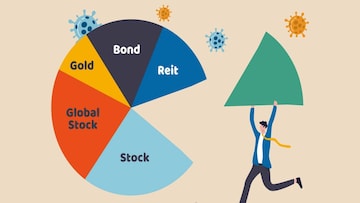
Rahul Singh, the Chief Investment Officer (CIO) at Tata Asset Management, recently shared valuable insights in an exclusive interview with CNBC-TV18.com, underscoring the critical role of strategic asset allocation for investors. Singh stressed the significance of maintaining a well-rounded portfolio and disclosed his positive outlook on specific sectors.
Live TV
Loading...
In the interview, Singh said that prioritising market timing is not advisable, emphasising the importance of a robust balance sheet in the current market context. He pointed out the favourable trajectory of valuations and advocated for a long-term perspective on India's promising prospects in the coming three years.
Singh also advised investors to focus on establishing a solid asset allocation strategy rather than attempting to time market fluctuations. According to him, once investors have a well-defined asset allocation in place, there is no need to engage in market timing.
Market timing, as Singh explained, involves making investment decisions based on predictions about future market movements. Instead of trying to predict short-term market shifts, Singh's counsel encourages investors to adopt a strategic approach. This involves crafting a balanced portfolio aligned with long-term financial goals and avoiding being swayed by short-term market volatility, which can be both unpredictable and risky.
Central to this approach is the crucial aspect of asset allocation, where the investment portfolio is distributed among various asset classes such as stocks, bonds, cash, real estate, and alternative investments. This diversification helps mitigate overall risk, as different asset classes perform differently under varying market conditions, contributing to a more balanced and resilient portfolio performance.
An ideal asset allocation
Portfolio asset allocation evolves with age and financial circumstances and may vary from person to person. However, it is said that in the 20s, a higher risk tolerance allows for a focus on equity stocks while balancing with stable investments. In the 30s, it's best to consider equity and fixed-income assets, managing increased earning potential and debt.
By the 40s, gradually one can reduce high-risk investments, increase stable options, and focus on debt instruments. With approaching retirement in the 50s, investors can shift to capital preservation with reduced equity exposure and more fixed-income investments. Post-retirement in the 60s, investors should aim for capital protection through low-risk options like gold, real estate, deposits, and debt instruments to safeguard accumulated savings from market fluctuations.
 (Image: Shutterstock)
(Image: Shutterstock)Sectors to bet on
In the quest for suitable funds, Singh emphasised the criticality of evaluating the track record. Additionally, he expressed optimism towards cyclical sectors, specifically recommending banking, infrastructure, manufacturing, and capital goods due to their potential for positive surprises amid ongoing recovery.
Cyclical sectors are closely tied to economic cycles, often performing well during periods of economic expansion or recovery. Singh's recommendation suggests that these sectors might see increased profitability or market performance due to ongoing economic recovery, making them potentially favourable areas for investment at that time.
The bottom line
Singh provided guidance on portfolio construction, suggesting investors consider a diversified approach with a mix of categories. "Decide on how many categories investors should have in the portfolio—maybe one hybrid, two flexi-cap, or even up to five categories," he advised.
In closing, Singh cautioned against scattering mutual fund investments across multiple Asset Management Companies (AMCs), encouraging investors to consolidate their portfolios within a limited number of AMCs for better management and oversight.
A look at returns of some of the mutual funds
| Scheme name | 3-year | 5-year | 10-year |
| SBI Contra Fund - Direct Plan - Growth | 35.32% | 23.54% | 18.84% |
| HDFC ELSS Tax saver - Direct Plan - Growth | 26.02% | 15.73% | 15.87% |
| SBI Long Term Equity Fund - Direct Plan - Growth | 25.70% | 18.12% | 16.96% |
| Bandhan ELSS Tax saver Fund - Direct Plan - Growth | 27.87% | 19.15% | 19.09% |
| Quant Tax Plan - Direct Plan - Growth | 35.75% | 28.08% | 25.20% |
| Mahindra Manulife ELSS Tax Saver Fund - Direct Plan - Growth | 23.90% | 17.21% | - |
| Canara Robeco ELSS Tax Saver Fund - Direct Plan - Growth | 20.57% | 18.83% | 17.39% |
(Source: Moneycontrol)
Check out our in-depth Market Coverage, Business News & get real-time Stock Market Updates on CNBC-TV18. Also, Watch our channels CNBC-TV18, CNBC Awaaz and CNBC Bajar Live on-the-go!


Supreme Court dismisses plea seeking postponement of CA exams; details here
Apr 29, 2024 2:29 PM
Just 8% women candidates contested first two phases of Lok Sabha polls
Apr 29, 2024 12:00 PM
The sexual assault case against Prajwal Revanna — here's what we know so far
Apr 29, 2024 11:36 AM
Repolling underway at one polling booth in Chamarajanagar LS segment in Karnataka
Apr 29, 2024 10:32 AM

